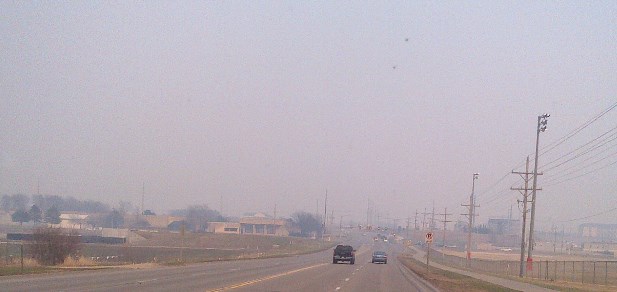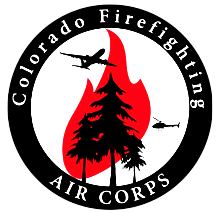
(UPDATED at 2:18 p.m. Ariz. time, April 17, 2014)
The incident management team on the Brown Fire in southern Arizona is listing the fire at 240 acres; 232 of the acres are on U.S. Army Fort Huachuca, and 8 acres are on the Coronado National Forest. That is a 34 percent reduction in size as a result of a more accurate map produced after a fixed wing infrared mapping flight Wednesday night.
Fire crews have been working on the fire since Monday constructing fire line, but Clay Templin’s incident management team continues to say there is zero percent containment after four days of work.
Below is a description of Wednesday’s activity on the fire:
Low humidities and gusty erratic winds occurred on the fire area. Low fire behavior with some areas of creeping and smoldering fire were observed. Firefighters made progress building direct fireline on the east and west flanks of the fire however containment will not occur until firefighters are confident the lines will hold. The forward spread of the fire has been stopped. Use of retardant and water from the helicopter was effective in assisting ground forces. Contingency line preparation continued in Sawmill Canyon to the west of the fire and Ramsey Canyon to the east of the fire. Firefighters conducted structural assessments in the Ramsey Canyon area.
This will be our last report on the Brown Fire unless it increases substantially in size.
****
(UPDATED at 12:05 p.m. Ariz. time, April 16, 2014)
The size of the Brown fire in southern Arizona is still reported to be 366 acres, the same as on Monday. Clay Templin’s incident management team continues to say there is zero percent containment, implying that no fireline has been constructed and held. Below is an update from the team at 8 a.m. Wednesday, describing the activities on Tuesday:
Three hotshot crews anchored the fire and began constructing fireline on the southeast and southwest flanks of the fire. Firefighters also scouted contingency lines. Airtankers and helicopters continued to drop retardant and water on the fire to try to minimize the fire’s spread. Aircraft began utilizing the tanker base at Libby Field with the exception of the DC-10 VLAT which is based out of Phoenix-Mesa Gateway Airport. Clay Templin’s Type 1 Southwest Incident Management Team assumed command of the fire Tuesday at 6pm.
****
(UPDATED at 2:52 p.m. Ariz. time, April 15, 2014)
A satellite pass over the Brown Fire in southern Arizona at 11:40 a.m. Ariz. time today did not detect any large hot areas on the fire, nor have any been found by the satellite during other passes since the flyover at 10:48 a.m. Ariz. time, April 14. Current images from a weather satellite do not show a large smoke plume. This tends to indicate that the fire has not been very active today. However, that could change.
An update issued by the Incident Management Team at 11:50 a.m. today still listed the fire size at 366 acres with no containment, the same as on Monday. The growth potential was described as “moderate” and the fire behavior as “Active fire. Short runs. Isolated torching with short range spotting”. No structures are threatened, and the terrain is described as the proverbial “steep, rugged, and inaccessible”.
Another Fire Weather Watch is in the forecast again for Wednesday due to low humidity, strong winds, and continued drought conditions.
A public meeting will be held Tuesday at 7 p.m. at the Sierra Vista Ranger District office, 4070 S. Avenida Saracino, Hereford, AZ
****
(Originally published at 10:54 a.m. Ariz. time, April 15, 2014)
A Type 1 Incident Management Team has been ordered for the Brown Fire burning in Garden Canyon on the north side of the Huachuca Mountains in southern Arizona. As you can see on the map of the fire below, it is burning seven miles north of the Mexican border and eight miles southwest of Sierra Vista, Arizona.

At 9 p.m. on April 14 the Brown Fire was reported to be 366 acres with no containment, a little small for a typical Type 1 Incident Management Team (IMT) assignment, but apparently the managers of the Coronado National Forest believe the fire has the potential to become large and complex. It started on Fort Huachuca, a U.S. Army base, on April 13 and burned onto the Forest Monday morning. The fire is human-caused.
Helicopters and air tankers, including a DC-10, have been dropping water and retardant on the fire.
The area is under a Fire Weather Watch today for low relative humidity, drought conditions, and strong winds.
The IMT ordered was Clay Templin’s Type 1 Southwest team. They are scheduled to assume command at 6 p.m. on Tuesday.
Today firefighters expect to scout for handline construction contingencies, use helicopters for crew shuttles, and continue to use helicopters and air tankers to drop water and retardant.
As of 9 p.m. Monday, firefighting resources assigned or en route include 160 personnel:
- 2 hotshot crews on scene – Ironwood IHC & Silver City IHC (3 additional hotshot crews enroute)
- Coronado NF crew 5 short crew
- 2 Single Engine Air Tankers (SEATs)
- 2 P2V air tankers
- 1 Very Large Air Tanker (VLAT)
- 1 Type 3 helicopter
- 1 Type 2 helicopter
- (1 one Type 1 helicopter enroute)
- Miscellaneous fire engines (crews supporting suppression efforts)
- Miscellaneous overhead






